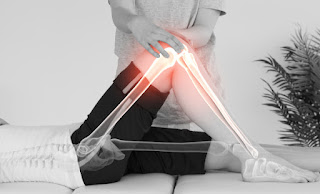Yoga For Chronic Pain
More and more doctors are starting to precribe Yoga for Chronic pain. However, most people think that yoga can help because you are moving your body, and whereever the pain is located you might be able to bring relief to that area through gentle movement.
But the underlying reasons, the less obvious reasons why yoga helps is because of neuroscience. And these reasons may not be immediately obvious.
I recently listened to Dr. Rangan Chatterjee interview Dr. Harold Schubiner for his podcast Feel Better Live More podcast. They were talking about chronic pain.
No evidence of Chronic Pain
If you take a random group of healthy 30 year olds, and do an MRI scan, and these are people with no pain at all, 40% of them will show to have degenerative disc disease in their spine. 30% will have bulging discs. These are 30 year olds and none of them have pain.
These are normal findings that occur with aging.
And what happens when you are 50? At 50 years old, 80% of people have degenerative disc disease with no pain, 60% have bulging discs with no pain, 30% have herniated discs with no pain.
And these ‘abnormalities’ go up to 90% when you are 60 years old or beyond! And remember, all these are people who have these scans are with NO pain.
The tendency that doctors have, when they get the scan result of a patient who has chronic pain will be to say that the reason the patient has the pain is because of what shows up in the scan. They might see a dejeneration of the discs, see that as the cause of the problem.
In many, many cases this is an erroneous diagnosis.
Firstly, this creates in the patient’s mind that there is a problem. Oftentimes it is thought of a problem that can’t be fixed because it's part and parcel of aging. Or it is seen as a problem that can only be fixed with medications, injections, or surgery.
Yoga for Chronic Pain
So many surgeries are being done on people’s necks and backs and what they are doing is treating the MRI scan, trying to fix that, and they are not treating the patient. What is shocking is that there is no evidence, zero evidence, through randomized controlled trials, that shows surgery is the correct course of action. Instead Yoga for Chronic pain can help.
In many cases, surgery can make people worse. This is because of what happens in the brain.
This is what we know about neuroscience. When you are fearful, when you get a diagnosis, if you have chronic pain, you will start to fear more, you fear that it is going to get worse over time. The neural circuits and pain receptors are being activated. And the pain receptors start overfiring. You get a closed feedback loop. There is pain, which leads to fear, worry, anxiety, stress, which leads to a focus and hyper awareness on the pain: "is it getting worse? How long will this last? It will never go away. I have to suffer for ever. I can't stand this pain." The surgery to the area creates trauma and highly invasive proceedures. This causes more pain not less.
The more worry and fear there is about the pain, more frustration or anxiety grows, which brings more focus on it, and so the pain grows. What is actually growing are the neuropathways, the pain receptors are firing again and again and what fires together wires together.
Chronic Pain is REAL
The pain is real. This is not saying ‘the pain is all in your head’. It’s not made up. You are feeling this pain. It’s just the source of the pain is from the pain circuitry in the brain, rather than from the biomechanical reality in the body.
And the pain may have fired in the first place because of something entirely unrelated to your spine or neck.
With careful diagnoses, by asking the patient about their history, their childhood, their stress levels, their situation in life regarding relationships, work, finances, overall health, a professional health care practitioner who is trained in Pain Reprocessing Therapy methodology, will work with a patient and be able to determine what other factors such as psychological, trauma related, stress triggers they have that could be causing emotional or mental pain for the patient.
Dr. Schubinger’s work and research has shown that when a patient is given a way to accept the pain, understand it from the neurological viewpoint. When they are taught to be okay with the feeling of it, knowing that many people can be pain free with herniated discs, etc, when they do not layer extra anxiety, fear or worry about the pain, then alongside adequate talk therapy that addresses the stress related issues whether from childhood or current life situations, those patients find a way to heal.
The research showed that reconceptualizing the patient's fear of pain, and allowing the sensations to be seen as safe and non-threatening, patients quite remarkably can quickly alter their brain's perception of threats, and this results in diminished pain signals travelling through the neuropathways.
The short version is the pain goes away.
How Dr. Schubinger and his colleagues determine whether the pain is caused by an overactive brain circuitry is to check to see if the pain moves for the patient. If it shifts from side to side, comes and goes, gets better or worse depending on different factors such as weather, diet, stress.
A moving pain diagnosis is a big indication that the source of the pain is something else, and it is the brain wiring causing the pain, not biomechanical issue. This can take time to establish because many patients are so afraid of their pain that they must first learn how to be with pain in a new way and monitor it from an unbiased, open viewpoint. Most patients will not have spent any time simply being with their pain without a story. They need to learn how to somatically experience their pain and not fear it.
This is where yoga for Chronic Pain can help.
I have always seen the role of yoga as helping give new approaches to chronic pain. When you get on your yoga mat. The invitation is to open your mind, to let the body feel. To let the sensations arise. To drop the narrative, and avoid going into a story of who or what those sensations mean.
At its heart, Yoga is an invitation to join. To connect. To connect deeply to all the sensations that are going on inside you.
The mind uses pain to alert you to something that needs your attention. To assume that what needs your attention is biomechanical is very simplistic. You may have a broken heart, or feeling the stress of having to shoulder huge responsibilities, you might have to step into difficult situations, you sometimes don’t know how to handle things, you can feel unseated, tight or tense. If you read those statements again you realise that your body is involved with every thing that happens to you.
The mind will use the body to tell you something hurts. When it’s an emotional hurt, a psychological hurt, the mind can only communicate that through the body.
The pain reprossesing therapy that Dr. Harold Schubiner gives to his patients is a somatic sensing process. And this is what we do in the Joint Renewal yoga that I teach.
If you would like to know more about Joint Renewal Yoga please go to www.kathywhiteyoga.com to sign up for my free Joint Renewal Guide




Comments
Post a Comment